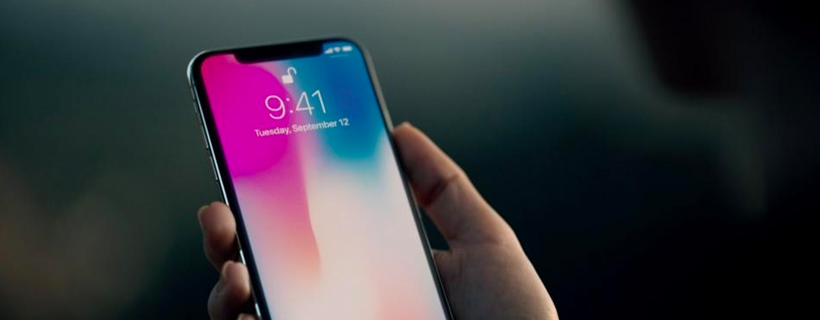We believe Apple will be one of 5G’s biggest beneficiaries. The company has potentially four initiatives that will benefit from 5G: iPhone, augmented reality, healthcare, and the long shot wild card of autonomous vehicles. While multiple Apple segments will gain, the iPhone is the most obvious 5G beneficiary (likely 52% of revenue this year). In the midst of the rising hype, we are keeping conservative expectations about the first year of iPhone 5G and see modest risk to Street estimates in FY21, followed by three years of likely upside to estimates.
Our iPhone 5G Roadmap
- FY20: iPhone 5G launches in September.
- FY21: Step back. Potential disappointment related to soft initial uptake of iPhone 5G, given the lack of carrier coverage in the US and globally. We see a modest risk to the Street’s 8% FY21 iPhone revenue growth estimate and expect actual growth closer to 2%.
- FY22: Step forward. iPhone 5G revenue lift begins creating upside potential to estimates.
- FY23: Step forward. iPhone 5G biggest upgrade year creating measurable upside potential to estimates.
- FY24: Step forward. 3-year iPhone upgrade cycle rounds out creating upside potential to estimates.
The Takeaway
During a typical upgrade cycle, Apple experiences a 1-year revenue tailwind followed by a 1-year revenue headwind. This variability has historically weighed on AAPL’s multiple. We believe the company will have a measurable tailwind to revenue and earnings growth for at least 3 consecutive years (FY22-FY24) related to 5G. This should translate to an increase in revenue and earnings visibility and is further justification that AAPL’s earnings multiple has room to move higher.
One Step Back: Modest Risk to FY21 Estimates
We recently detailed why 5G in the US will take a year longer to roll out, as limited coverage will likely dampen initial mobile demand. If we’re correct, that would be a step back for a growing group of Apple investors anticipating an increase in iPhone demand in 2021 driven by 5G. Currently, the Street is expecting flat iPhone revenue growth in FY20, increasing to 8% in FY21. Given our conservative view on the initial iPhone 5G year, we believe the current FY21 iPhone revenue growth estimate of 8% is aggressive, and are expecting growth closer to 2%.
Three Steps Forward: Upside Potential to FY22-FY24 Estimates
Starting in FY22, we believe Apple is positioned to have three years of 5-10% annual iPhone revenue growth, above FY22 Street estimates of -3%. Beyond FY22, FactSet is not reporting iPhone revenue estimates but does report overall Apple revenue estimates through FY24. Between FY22-FY24 the Street is expecting a consistent 5% annual revenue growth for Apple. Since overall revenue growth is outpacing iPhone growth due to Services and wearables, that implies investors are expecting flat-ish iPhone growth throughout those years. Given the compelling user experience around 5G (suggesting it lives up to the hype), we expect higher than average iPhone upgrade rates over that 3 year period.
Additional Apple Initiatives That Will Benefit from 5G
Ultimately, we believe 5G’s impact on Apple will go beyond the iPhone and benefit potentially three additional initiatives. They include:
Augmented Reality
The fierce debate around the future of AR is understandable, given the technology has limited applications today, but its long-term potential is easy to imagine. AR has been described as painting the world with data. Massive data throughput is needed to unlock its potential. Ubiquitous, low-latency connectivity will enable what we think of as true AR, shifting from the small window of your phone to a wearable capable of spatial computing. Based on acquisitions and patents, it’s clear that Apple is developing AR glasses. Our best guess is that they will be released in CY22. We believe this could result in a gold rush for developers creating AR experiences and for Apple, who would take a cut of the revenue generated from these applications in the App Store. We believe that none of the AR 5G lift is priced into shares of AAPL.
Healthcare
While healthcare can materially benefit from 5G, Apple’s approach to the industry is largely unknown. No-latency wearables will create new ways for consumers to track and manage wellness, but that would only have a small impact on Apple’s business. Wearables will likely account for 15% of revenue in five years, compared to ~8% last year. Tim Cook has commented that their impact on health will be “Apple’s greatest contribution to mankind.” While “greatest contribution” doesn’t necessarily mean “biggest business,” it may mean Apple would pursue a path toward improving personal healthcare by leveraging wearables, AI, and their user-centric hardware/software to tie together payers, providers, and consumers. We believe that none of the healthcare 5G lift is priced into shares of AAPL.
The Wild Card: Autonomous Vehicles
Autonomy needs 5G. A vehicle can drive itself without the 5G network, but for things like V2V communication, teleoperations, and other enablers of mass adoption, full coverage and instantaneous data are required. Like healthcare, Apple’s go-to-market in autonomy is unknown. Our current thinking is in the five years that Apple will work with an auto manufacturing partner, likely an existing auto OEM, and help design a vehicle (car or bus). This is less likely to take the form of an Apple-branded vehicle, which is a tall order given Apple’s well-documented and turbulent history of trying to approach the auto market. We believe that none of the autonomous vehicle potential is priced into shares of AAPL.
